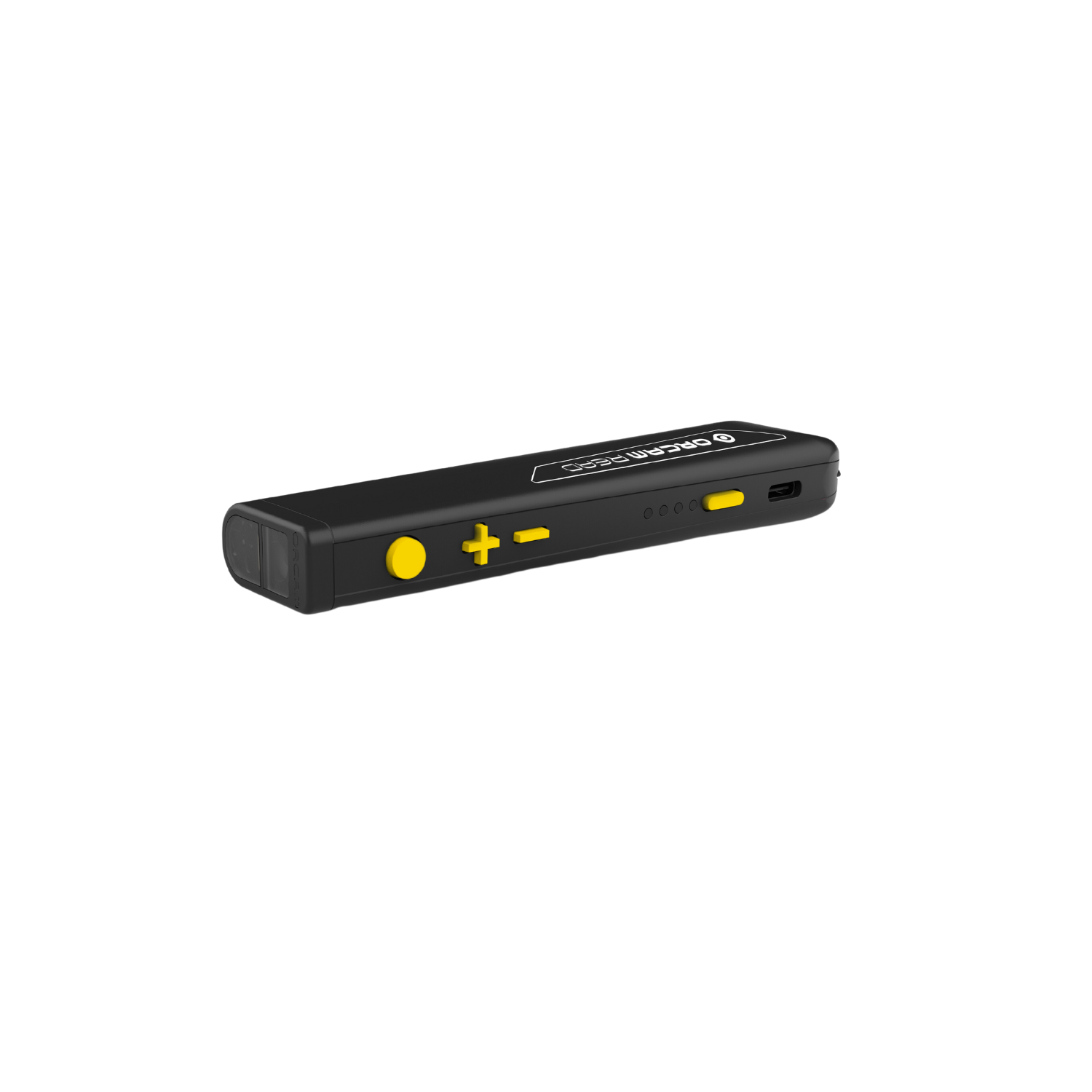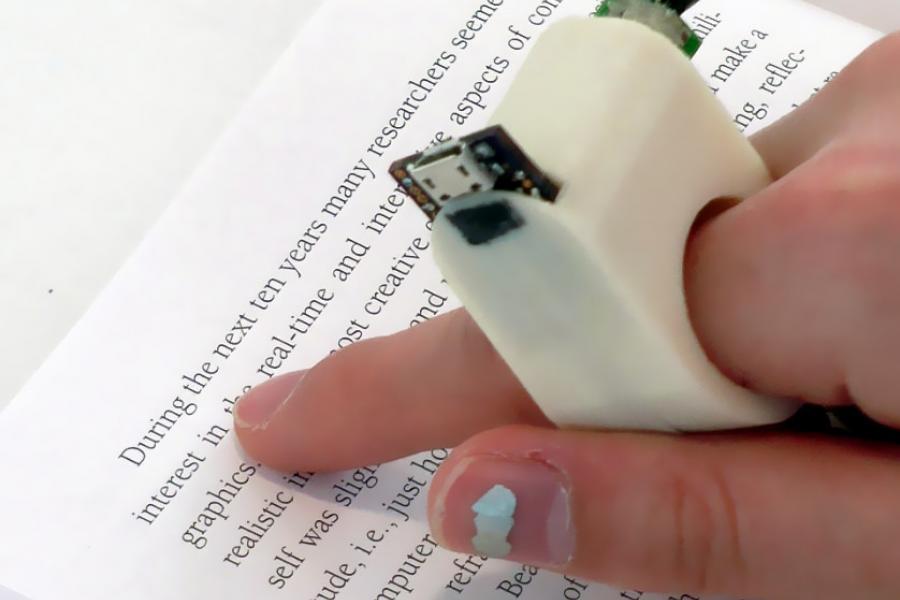Speech-to-Text Devices for Low Vision: Enhancing Accessibility
Speech-to-Text Devices for Low Vision: Enhancing Accessibility
Blog Article
Discover Cutting-edge Devices Made for the Visually Damaged
The growth of ingenious tools for the visually impaired stands for a considerable development in access and independence. Technologies such as wise glasses with AI abilities and mobile applications developed to provide auditory descriptions are improving everyday experiences for users.
Smart Glasses for Navigation

Smart glasses created for navigating are transforming the method visually damaged individuals interact with their environment. These sophisticated gadgets use a combination of electronic camera modern technology, fabricated intelligence, and auditory feedback to give real-time details about surroundings. By utilizing challenge detection systems, wise glasses can notify users to prospective dangers, allowing much safer wheelchair in both unknown and acquainted settings.
The combination of GPS modern technology better improves navigating capacities, permitting individuals to receive auditory instructions as they move. This hands-free approach not only fosters independence yet additionally equips aesthetically damaged individuals to browse city landscapes with enhanced self-confidence. Furthermore, many smart glasses are geared up with features that recognize sites and road signs, providing contextual details that enhances the customer experience.
In addition, the development of these tools is consistently progressing, with firms functioning to boost the accuracy of item recognition and increase the variety of navigational functions. As wise glasses come to be a lot more economical and accessible, they hold the possible to dramatically transform day-to-day live for aesthetically damaged customers. Inevitably, these cutting-edge devices represent an important action towards inclusivity, offering improved movement and a greater feeling of autonomy for people browsing the globe around them.

Mobile Application for Daily Living
Just how can mobile applications enhance the day-to-days live of aesthetically damaged individuals? Mobile applications are changing the means aesthetically damaged customers navigate their atmospheres, handle day-to-day jobs, and accessibility info. These applications give necessary assistance through numerous performances, fostering freedom and improving lifestyle.
Several cutting-edge mobile applications are designed specifically for everyday living. For instance, apps like Be My Eyes connect aesthetically damaged users with sighted volunteers using video calls, permitting them to receive real-time aid with tasks such as checking out tags or navigating unfamiliar areas. In A Similar Way, Seeing AI, established by Microsoft, makes use of man-made intelligence to explain surroundings, reviewed text, and recognize objects, properly changing a mobile phone right into an effective device for daily help.
In addition, navigation apps customized for the aesthetically impaired, such as Aira and BlindSquare, use audio-based directions and ecological information, enabling individuals to traverse their surroundings safely and confidently. Beyond navigation and immediate help, mobile applications additionally support company and task management, with functions that assist customers set suggestions, create order of business, and track appointments. In recap, mobile applications offer as vital resources, empowering visually impaired people to lead more independent and satisfying lives.
Wearable Technologies for Support
Empowerment with modern technology is increasingly evident in the world of wearable gadgets designed to help aesthetically damaged individuals. These ingenious tools incorporate seamlessly into day-to-day live, improving navigation and offering crucial feedback to individuals. For circumstances, clever glasses furnished with cameras can recognize faces and review message out loud, permitting customers to communicate even more confidently in social and expert setups.
An additional remarkable improvement is using haptic responses systems in wearable gadgets. These systems use vibrations or various other tactile signals to communicate information concerning the individual's setting, such as challenges or changes in surface, improving mobility and safety and security. Wearable innovations also consist of wristbands that link to smartphones, signaling customers to alerts with refined vibrations, hence improving connection without reliance on aesthetic hints.
As these technologies proceed to advance, they are not only enhancing independence for visually damaged individuals yet also promoting a better feeling of inclusion in culture. By connecting the gap between challenges faced in day-to-day living and the capacity for autonomy, wearable technologies work as crucial tools in the mission for equal rights and empowerment for those with aesthetic disabilities.
Sound Description Tools
Sound summary tools play eye glass places near me an important role in improving accessibility for aesthetically impaired individuals, supplying them with the capacity to involve with visual media. Assistive technology for the blind. These tools supply narrated summaries of vital visual elements in films, television shows, and live efficiencies, making certain that users can completely understand the context and emotions conveyed via visuals
Audio summary can be incorporated right into numerous systems, consisting of streaming solutions, movie theater testings, and live cinema. Several preferred streaming services now include audio summary as an access attribute, allowing audiences to select it easily. Along with mainstream media, specialized apps likewise exist, providing audio descriptions for art exhibits, museums, and other social occasions.
The performance of audio description depends upon the skill of the narrators, that must convey visual details succinctly without diminishing the original sound. Innovations in this field are also leading the way for more tailored experiences, where customers can readjust the degree of information and pacing according to their preferences.
Braille Innovations and Gadgets
Braille technologies and gadgets have actually considerably transformed the means aesthetically damaged people interact with message and info. Modern developments have led to the development of versatile tools that enhance proficiency and self-reliance among users.
Furthermore, portable Braille notetakers combine standard Braille input with contemporary performances, assisting in note-taking, scheduling, and record editing on the move. AI-powered visual aids. These small devices usually include text-to-speech capabilities, bridging the void between Braille and auditory details
On top of that, innovative Braille printers have actually emerged, enabling individuals to produce Braille tags, documents, and instructional materials efficiently. This access promotes greater participation in specialist and educational settings, eventually promoting inclusivity.
Furthermore, research study into clever Braille innovations proceeds to broaden. Instruments that incorporate fabricated knowledge are being explored to give real-time navigation aid and contextual info, enhancing the user experience in varied settings. In general, these technologies show a dedication to equipping aesthetically impaired people via innovation, ensuring they can quickly access and involve with the globe around them.

Conclusion
The development of ingenious devices for the aesthetically damaged dramatically improves independence and top quality of life. Smart glasses, mobile applications, wearable technologies, audio description tools, and Braille advancements jointly equip people by supplying crucial navigating support, ecological understanding, and boosted analysis experiences. see it here These modern technologies not just foster better incorporation but also promote autonomy in everyday tasks, ultimately adding to an Find Out More extra obtainable and fair culture for aesthetically impaired people. Proceeded development in this area holds assurance for additional improvements.
As wise glasses come to be more budget friendly and available, they hold the potential to substantially change daily life for visually impaired users. Mobile applications are reinventing the means visually impaired individuals navigate their environments, handle daily jobs, and gain access to info. Applications like Be My Eyes connect aesthetically impaired customers with sighted volunteers by means of video calls, enabling them to get real-time aid with tasks such as checking out tags or navigating unfamiliar rooms.Additionally, navigating apps tailored for the aesthetically impaired, such as Aira and BlindSquare, use audio-based instructions and ecological info, making it possible for customers to traverse their surroundings safely and with confidence.The development of cutting-edge devices for the aesthetically impaired dramatically enhances self-reliance and top quality of life.
Report this page